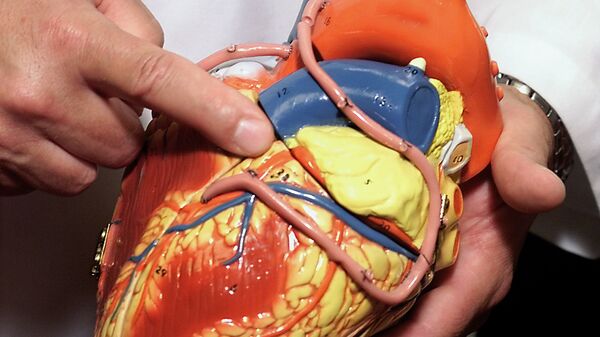The authors of the study claim that these compounds have great potential for application in medicine.
For example, in the future, it is possible to significantly reduce the number of postoperative complications in cardiovascular surgery through the use of biopolymers as a coating for vascular endoprostheses (stents). The results of the study were published in the International Journal of Biological Macromolecules magazine.
According to Anna Shumilova, Assistant Professor in the Department of Biotechnology at Siberian Federal University, the number of cases of atherosclerosis is growing all over the world, with the highest risk of the disease in men aged 40-60-years-old.
One treatment option is stenting the coronary heart vessels. A special supportive tube is inserted into the affected vessels; which when expanded broadens the lumen of the vessel and improves blood circulation. Unfortunately, sometimes postoperative complications occur, due to allergic reactions to the materials from which the stents are made.
The body can reject such stents and react by overgrowing the implants with a cellular mass, which can endanger the patient’s life. Also, whenever a foreign body is introduced into an organism, platelets rush into the penetration zone and stick together to form blood clots, which can trigger a stroke or heart attack.
To avoid postoperative complications, stents with a hypo-allergenic coating are required. For example, a polymer film composed of polyhydroxyalkanoates (PHA).
Previously, researchers of SB RAS Krasnoyarsk Institute of Biophysics, together with specialists from the Shumakov Centre for the Transplantology of Artificial Organs, have already investigated the properties and interaction of PHA when coming into contact with blood cells in vitro. Recently SFU scientists conducted a “compatibility test” for four types of biopolymers, with different chemical compositions: two were rigid and highly crystalline while the other two had elastomeric (rubber-like) properties.
As Anna Shumilova said, “the polymers for the experiments were obtained at the Biotechnology Laboratory for New Biomaterials at Siberian Federal University”.
“The polymer films were placed in special sterile trays with blood cells. During the experiment, red blood cells didn’t burst or deform; platelets and monocytes behaved as though they were in the bloodstream of a healthy organism, and macrophages showed normal behaviour on the surface of the films”, Shumilova added.
According to Shumilova, “the study showed that the biopolymer “shell”, which makes the metal coronary stent “invisible” to the human immune system, will help significantly reduce the number of postoperative complications in cardiovascular surgery in the future”.

